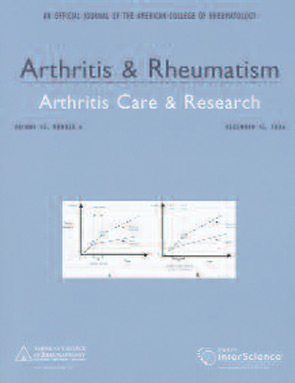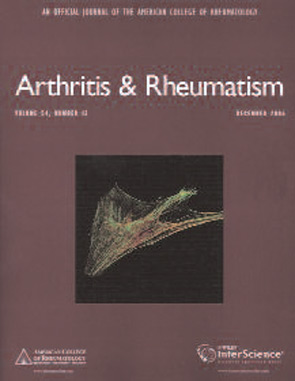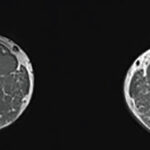
Despite Clinical Remission, Inflammation Marches on in RA
By Norra MacReady
Of more than 100 RA patients who met the clinical criteria for remission, most had ongoing synovitis when examined with magnetic resonance imaging (MRI) and ultrasonography (US).
These findings suggest that “current methods of assessing remission do not necessarily correlate with an absence of disease, and so they may be inaccurate measures of true RA remission,” the authors write.
They prospectively studied 107 people attending outpatient rheumatology clinics at the Leeds General Infirmary in Great Britain and compared them to 17 gender-matched control subjects with no history of joint disease. The patients were chosen by consultant rheumatologists, whose assessment was that these individuals were in remission. Fifty-five percent fulfilled the ACR criteria for remission, and 57% had a Disease Activity Score (DAS28) of <2.6 (another criterion of remission). They had had RA for at least 12 months with no disease flare-ups or changes in treatment for at least six months and no current indications for any treatment change. Ninety-two percent of the patients were taking disease-modifying anti-rheumatic drugs (DMARDs) when the study began, and 99% had taken at least one DMARD at some point in their treatment.
Along with the standard clinical, radiographic, and quality-of-life assessments, each patient underwent US and MRI examinations of the dominant hand and wrist joints, with the investigators noting the presence and location of any synovial hypertrophy, synovitis, tenosynovitis, or bone marrow edema.
Overall, the patients reported only mild symptoms, little functional impairment, and minimal impact on quality of life. The clinical and laboratory tests showed low levels of disease activity. Nevertheless, “of the RA patients who were in remission according to the ACR criteria, 96.1% had synovitis detectable on MRI, and 81.0% had synovial hypertrophy on US,” the authors write. “Similarly, 96.2% of the RA patients who were in remission according to the DAS28 criteria had synovitis demonstrable on MRI, and 84.2% had synovial hypertrophy on US.”
For the most accurate assessment of disease activity, patients probably should undergo regular follow-up imaging studies “at least when optimal status is believed to have been achieved,” says senior author Paul Emery, MD, clinical director of rheumatology at Leeds Teaching Hospitals Trust.

Limitations Linger after Meniscectomy
By Norra MacReady
These findings emphasize the importance of restoring muscle strength and suggest that postoperative muscle training might help some patients, says Ericsson, a physical therapist and PhD candidate at Lund University in Sweden.
Ericsson and her coauthors studied patients who had undergone arthroscopic meniscectomy one to six years previously, when the subjects ranged from 35 to 45. They compared muscle strength and functional performance in the operated and unoperated legs, and had each patient complete the Knee Injury and Osteoarthritis Outcome Score (KOOS)—a questionnaire that asks about pain and other symptoms, function in sport and recreation, activities of daily living, and knee-related quality of life. Scores range from 100 (no symptoms) to 0 (extreme symptoms).
A total of 29 men and 16 women participated in the study. Their mean age was 45.7, with a mean time from surgery of four years. They had a mean body mass index of 26.5 kg/m2, and 33 reported some pain in the operated knee. Overall, isokinetic knee extensor strength was significantly less for the operated compared to the non-operated leg (p<0.02). The operated knee also performed less well on the one-leg rising test, another test of knee and hip extensor strength (p=0.004).
Scores on all components of the KOOS were worse for these patients than for age-matched, healthy control subjects (<0.001). Their scores on the pain and quality-of-life scales were similar to those of post-meniscectomy patients who developed post-traumatic osteoarthritis, an unexpected finding, Ericsson tells The Rheumatologist. The patients in this study scored higher (better) on the scales measuring symptoms, activities of daily living, and sport and recreational activities.
Mensicectomy patients are usually prescribed a home exercise program after surgery, but they generally do not undergo supervised physical therapy. The findings of this study “do not allow us to make any inferences about a general need for supervised physical therapy,” says Ericsson. “Yet our findings that patients have low self-perceived function and that this is related to their strength deficit suggests that restoration of full muscle strength is important, and that some patients might benefit from muscle training.”
Norra MacReady is a medical journalist based in southern California.

